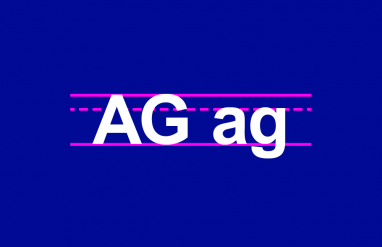By Lindsay Barrett
If you have an early reader and writer in your life, you’ve likely heard of “sight words.” What are they, why do kids need to learn them, and how can you help without inciting groans of boredom?
Here are the basics you need to know, and a handy list of fun practice activities that will have kids too busy moving and creating to complain.
What are sight words, and why are they important?
Sight words are just that: words readers recognize automatically by sight. These include what are known as high-frequency words—the words that occur most commonly in everyday language like to, was, and come. Sight words can also include names, proper nouns, or other words specifically meaningful to a child, such as Grammy for a grandmother’s name or Ohio if children live in that state.
Knowing sight words helps kids who are learning to read do so more fluently by acting as landmarks among words that must be decoded. For instance, when an early reader spots familiar words like I, can, and my in the sentence I can ride my bike, it’s easier to make meaningful attempts at the remaining unknown words when they can orient around known sight words.
Sight words also help sentence-writing for early writers feel less daunting. Writing I went to a baseball game is more manageable when the learner knows I, went, to, and a by heart.
How to help kids learn sight words
Conventional belief is that sight words require rote memorization. There is truth to this: knowing words automatically is a hallmark of proficient reading. Eventually, most readers memorize thousands of common words. And hey, all the words in this article are likely your adult “sight words.” Nicely done!
But it’s not only about memorization when kids are learning sight words. It’s still important to help children read left to right across a sight word and connect the letters to sounds spoken. This is true even when words break common spelling rules. In was, for example, the W makes a /w/ sound, but the A sounds like /uh/ (short U), and the S actually sounds like a Z.
You can still “read” the word was by pointing to the letters as you make each sound to help children make these letter-sound connections—and hopefully remember them when they see the word was again in print or when trying to write it.
It can be helpful for children to focus on words that relate to one another. To and do pair nicely, as do come and some, and even was and has, with discussion about how the middle vowels behave differently. Some teachers intentionally assign words to learn in groups for this reason. If you need guidance on which words kids should practice, the Dolch Word List or Fry Word List are standard resources.
It’s clear that sight words are helpful, but they’re not always the most exciting parts of reading and writing. But don’t worry: we have plenty of engaging ways to help you practice sight words with your young ones. All you will need are some simple materials you probably already have on hand!
Sight word reading practice activities
Feed a word monster
Write sight words on index cards or the like. If a child is only practicing a few words, make multiple cards of each word.
Decorate a cardboard box as a “word monster.” Cut a hole for the mouth and tell children the monster is “hungry” for a certain word for them to feed it.
Alternatively, give the child a stack of paper scraps to write a word on over and over to fill up the hungry monster.
Egg hunt
Write words on slips of paper and place them inside plastic eggs. Hide the eggs. Give children a checklist of all the words and have them hunt for them, checking each word off the list as they find it.
Car zoom
Draw a road on a large piece of paper or make one with tape on the floor. Write sight words on sticky notes and place them at different points on the road. Have children drive toy cars to certain words.
Or, draw lines to make a “parking lot” and write a word in each space. Have children be the “parking attendants” and park cars on certain words or retrieve cars parked on certain words.
Sight word passwords
Post sight word “passwords” on sticky notes throughout your space. Children must say the word each time they pass through a door, open a cabinet or drawer, or pick up an object.
Wear a sight word
Clip a word to your shirt. Every time children want to ask you something, they must read the word first!
Sight word hopscotch
Use chalk outdoors or masking tape indoors to create a hopscotch grid. Write a sight word in each box for children to say as they hop on it.
Word match dash
Write sight words on pairs of index cards. Spread one set of words around the room.
As you flip through the other set, children must dash to retrieve each word’s match. Play multiple times using a timer, trying to beat the previous time.
Sight word bowling
If you have a play bowling set, tape a slip of paper with a sight word to each pin.
Alternatively, use half-full plastic water bottles as pins (we recommend you do this variant outside). When children knock down pins, they must read the words correctly to earn those points.
Target practice
Hang a target poster on the wall with sight words written on it, or label plastic bottles or other small targets with sight words.
Have children aim Nerf guns or suction-cup arrows at the words. They must read them correctly after hitting them to earn their points!
Invisible ink words
Write sight words with white crayon on white paper. Have children paint over the paper with watercolor paint and read the words they reveal.
Minute to win it
Give children a sight word list. Set the timer for one minute and keep track of how many words they can read correctly.
Repeat over time and keep track of how they improve or work toward a target goal.
Sight word writing practice activities
Sensory writing
Spread a light layer or sand, flour, or salt in a baking sheet or pan. Have children practice writing words with their fingers.
(If you’re worried about containing the mess or want to reuse the same material another day, a plastic pencil box or food storage container are great lidded options.)
Shaving cream writing
For good, clean fun, squirt shaving cream onto a baking sheet or directly onto a table or counter. Have children spread it out and write words in it.
Paint bag writing
For a mess-free option, squirt a small amount of paint into a zip-top bag, squeeze out the air, and seal well with a few layers of packing tape.
Have children use a cotton swab to “write” words on the outside of the bag. It’s especially fun to tape the bag to a sunny window.
Cork dot painting
Write a sight word in large lowercase letters on a piece of paper. Squirt paint onto a plate and give children a bottle cork to dip in it.
Have them dot the cork along each letter in the word as they spell the word aloud. Repeat with several colors.
Rainbow writing
Type or print the word on a piece of paper. Have children trace over the word again and again with different colors.
Interactive writing
Are you writing schedules or chore lists for children? Leave blanks for sight words (or leave some missing letters) and have them be the teacher and fill them in!
Font fun
Have children write a word on paper or a dry erase board in as many different styles as they can: bold, italic, large, tiny, swirly letters, bubble letters, etc.
Or, have children type their words in a word processing program and change the font type, size, or color for each word.
Cheer up
Have children turn sight word spelling into a chant or cheer. Think: “Give me an S! Give me an H! Give me an E! What’s that spell? She!” Record the cheering on video, or call a relative and give a live performance.
Practicing sight words doesn’t have to be a drag! Keep it playful, and make sure kids have plenty of chances to transfer all that practice to real, authentic reading and writing, too. They’ll be sight word masters before you know it.
Lindsay Barrett is a teacher and literacy consultant. She writes resources for educators and parents. Find out more about her work at lindsay-barrett.com.














